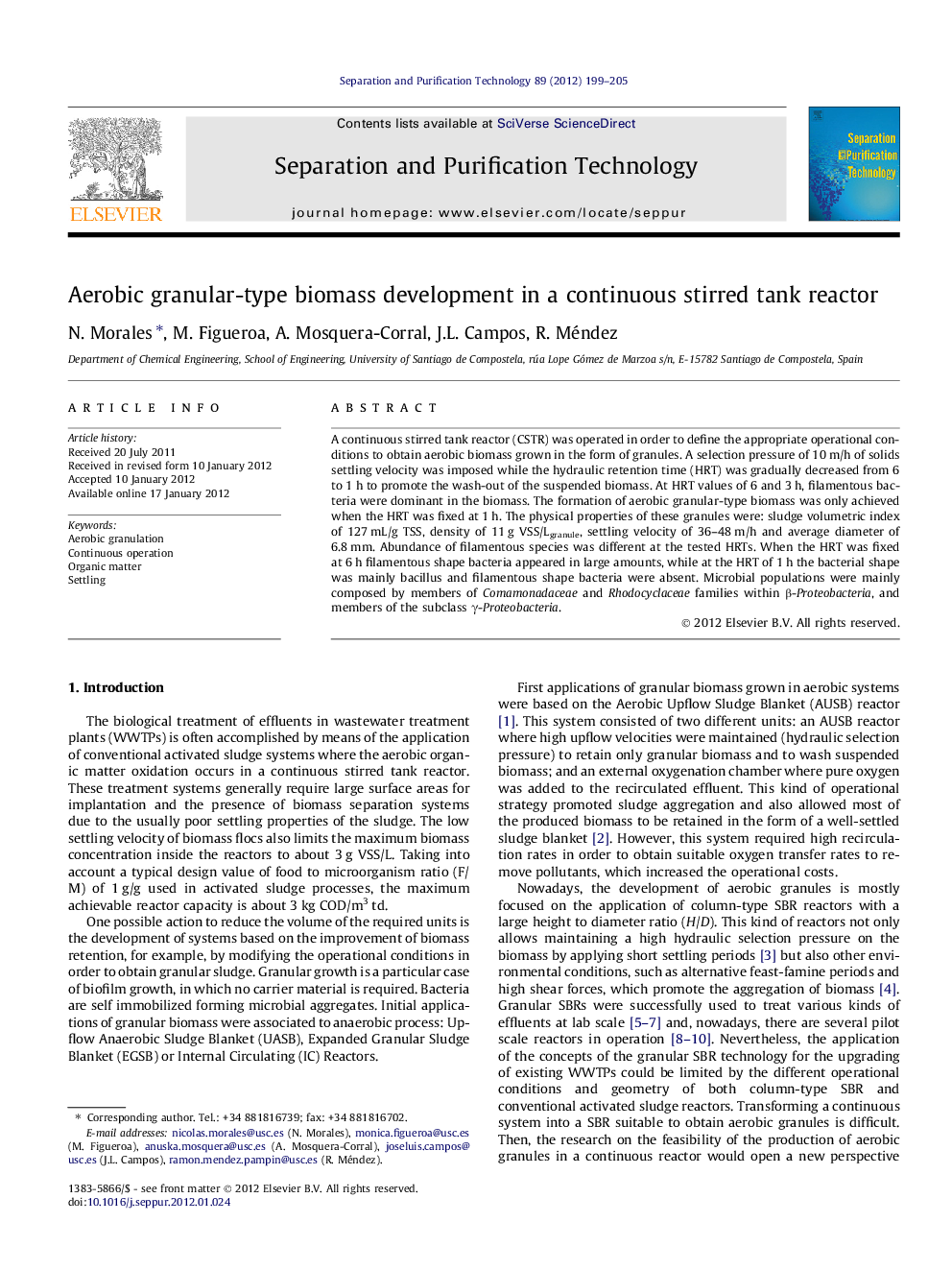| Article ID | Journal | Published Year | Pages | File Type |
|---|---|---|---|---|
| 642271 | Separation and Purification Technology | 2012 | 7 Pages |
A continuous stirred tank reactor (CSTR) was operated in order to define the appropriate operational conditions to obtain aerobic biomass grown in the form of granules. A selection pressure of 10 m/h of solids settling velocity was imposed while the hydraulic retention time (HRT) was gradually decreased from 6 to 1 h to promote the wash-out of the suspended biomass. At HRT values of 6 and 3 h, filamentous bacteria were dominant in the biomass. The formation of aerobic granular-type biomass was only achieved when the HRT was fixed at 1 h. The physical properties of these granules were: sludge volumetric index of 127 mL/g TSS, density of 11 g VSS/Lgranule, settling velocity of 36–48 m/h and average diameter of 6.8 mm. Abundance of filamentous species was different at the tested HRTs. When the HRT was fixed at 6 h filamentous shape bacteria appeared in large amounts, while at the HRT of 1 h the bacterial shape was mainly bacillus and filamentous shape bacteria were absent. Microbial populations were mainly composed by members of Comamonadaceae and Rhodocyclaceae families within β-Proteobacteria, and members of the subclass γ-Proteobacteria.
Graphical abstractContinuous reactor with biomass selection in the effluent tube.Figure optionsDownload full-size imageDownload as PowerPoint slideHighlights► Up to now aerobic granules have been developed in sequencing batch reactors. ► In this work aerobic granules are produced in continuous stirred tank reactors. ► A HRT of 1 h and an imposed biomass minimum settling velocity of 10 m/h were used. ► This strategy can be used to upgrade conventional WWTPs. ► Higher loads than in activated sludge systems can be treated.
